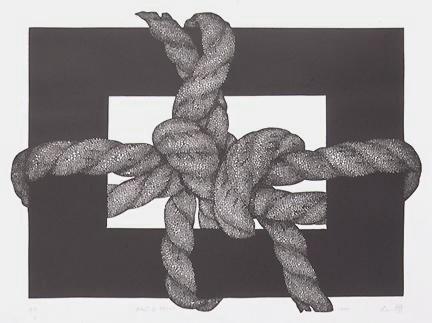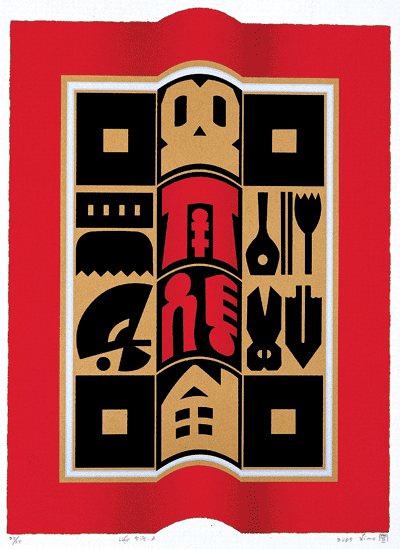While carving this afternoon, I was listening to the (wonderful) iPlayer from the BBC in England, and enjoyed an episode of the very long-running program
Desert Island Discs. You are probably familiar with the idea ... the host interviews a guest, who chooses ten records that he would take if he were to be stranded on a desert island. It's always an enjoyable listen, and each of the guests always has to explain just why these particular choices were made.
It occurred to me that we here on [Baren] could easily play the same game, so I'll give it a try - not with 10 prints, which would be a bit much, but with three. Here they are (images are clickable for enlargements):

My third print is one that I don't actually own, but perhaps the BBC can afford to buy a copy for me when they strand me on the island. It was created in 1942 by the French designer Paul Jacoulet, being produced to his (exacting) specifications by his hired workmen, Kentaro Maeda the carver, and Shunosuke Fujii the printer (with three assistants).
Le Bocal de Poissons Rouge

It is perhaps fairly obvious why this is a 'desert island' choice - there is enough detail here to keep any viewer rapt for a very long time indeed. Jacoulet cut his own path through the world, and I'm not an uncritical fan of everything he was involved with, but with work like this, he earned my complete respect. I want to produce work of this quality one day!

The second one that I will take with me
is one that I own. And the fact that I have had it for many years, and yet would still take it with me, is proof of it's appeal! It is a Meiji-era
kuchi-e, one of the prints created as frontispieces for literary magazines of the day.
Woman with Poetry Card

I have written quite extensively about this print in other places, so simply present it here for your enjoyment.

For my Number One choice to take to the island, I am selecting a reproduction print from my collection - a design by Utamaro. This copy was made somewhere around late Meiji, or perhaps in the Taisho era. This was when the level of craftsmanship was at it absolute peak, and this reproduction is actually more finely made that the original Utamaro (from the 1790s) that it copied.
Obvious Love

If you click to see the larger image, you can perhaps see some of the reasons why I have selected this one, and why I can sit and stare at it all day ... the beautiful sweep of the calligraphic lines of the clothing, the wonderfully faded 'cracked mica' background, and of course, the astonishing delicacy of the hairlines, which are carved on two separate blocks, which line up absolutely perfectly, to take each hair from the dark mass at the root, out to the invisible place where it ends. It just doesn't get any better than this, and that's the truth! So there are my three selections ... I hope some other [Baren] members will blog their own Desert Island choices here!


















